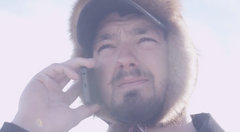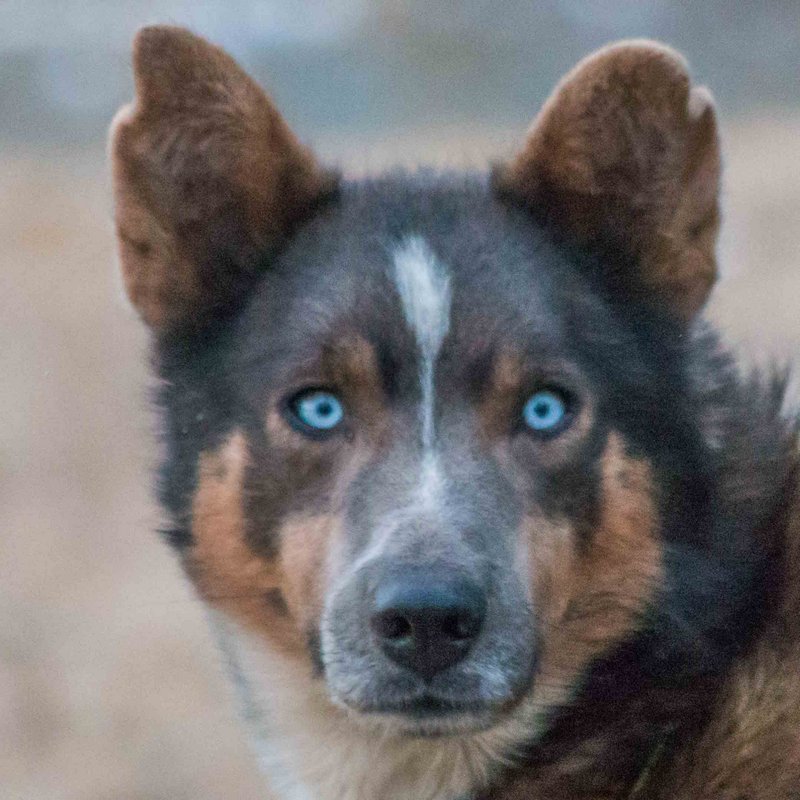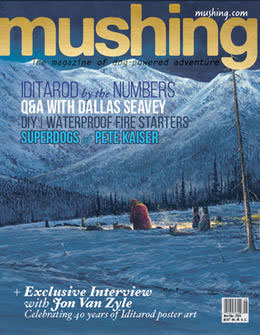
Andy at his 2007 Iditarod Finish
Last night I noticed something noteworthy while watching the GPS trackers: every musher in the race was between Nikolai and Ophir, within a 100 mile stretch of trail. This is remarkable, and it’s not something I’ve seen before. I believe what we’re seeing in this race is the fruition of years of effort by the Iditarod Trail Committee to limit the number of unqualified and inexperienced mushers taking part. The current last-place team, for instance, is none other than Dan Seavey, patriarch of the Seavey mushing juggernaut, and veteran of the very first Iditarod in 1973. Others in the back of the pack are also quite experienced dog drivers, and a number of the rookies are running younger puppy teams for Iditarod contenders. Gone are the days of any yahoo showing up in Anchorage with a team of dogs. (See my dad’s description of his rookie run in 1979). Nowadays, in addition to the racing requirements (200 and 300 mile qualifiers), a rookie must provide a reference of an Iditarod veteran who can vouch for their mushing and wilderness survival ability. This is in addition to the mandatory rookie meeting in December prior to the race, where they receive rigorous instruction on dog-care, trail hazards, and equipment, culminating with a visit to Martin Buser’s kennel. This doesn’t take into account the immense expense and time allotment for their own training and preparation.
This is good and bad. On the good side, dog care has dramatically improved (no dog deaths in the last two Iditarods), there are fewer scratches (no one likes to see someone’s work and investment end in failure), and the Iditarod organization is able to shore up their support (veterinarians, race judges, and volunteers are able to move up the trail more efficiently, not having to wait for stragglers). This saves money for the race and helps promote a good image of professional dog drivers and well-cared-for dogs. On the flip side, the overall number of young and rookie mushers getting into long-distance racing -already limited by the outrageous expense of having and maintaining a dog team- is hampered by the strict requirements placed on participating in the sport’s single biggest event. At the same time, some of the frontier magic of the old Iditarod is gone. Mushers coming off the trapline or showing up in Anchorage on a shoestring are a thing of the past. This is why, I think, a lot of mushing fans are excited about some of the younger mushers from off the road system, like Pete, Mike Williams, Jr., and Josh Cadzow. There is still an element of Bush Alaska pride that comes from bringing a team from off the road system to do battle with the established mushers from Fairbanks and the Matsu Valley.

















